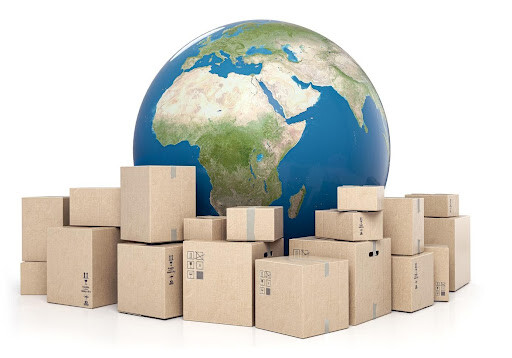E-Export Guide: What is Exporting? How to E-Export?
When businesses want to export their products or services abroad, they can use e-export sites or online marketplaces. The tax exemptions, government incentives and supports provided strengthen the hand of e-export companies and the share of e-export in exports is gradually increasing. In the detailed guide we have prepared for businesses that want to sell products across borders with e-export, which is becoming increasingly popular and removes international borders, there are answers to every curious question such as which products to sell and which cargo companies to use for delivery.

What is Export?
Export is the name given to the operation of selling a good or service to foreign countries in foreign currency. It can also be defined as exporting or selling abroad. The definition of a sales operation as export depends on the fact that the operation is made to a foreign country in foreign currency.
A member of the “General Secretariat of Exporters’ Associations” and a natural or legal person or organization with a tax number are defined as exporters. Exporters sell goods outside the customs borders or to free zones within the scope ofthe “Customs Regulation“. There are different methods for the sale and the relevant methods are diversified according to tax exemption, exportation of an imported good or a different distinguishing aspect of the sale.
Which Products are Sold? How to Choose a Product?
E-export, which changes the classical understanding of export and provides great convenience to entrepreneurs who want to sell products abroad, has great advantages in increasing profit margins with the right product type choices. As with any type of trade, e-export requires a good analysis of the products to be sold depending on existing marketplaces and opportunities, customer demographics and country standards.
Before answering the question of which products are sold with e-export, it is necessary to explain a little more about how to analyze the products to be sold. As mentioned above in the product research, the customer should be analyzed well. Since the customers in e-export are different countries, it is necessary to look at important criteria such as the geography, cultural characteristics, eating habits, climatic conditions and political situations of the countries.
For example, if your industry is clothing, you should take into account the difference between the climate of Northern European countries and Middle Eastern countries. Similarly, while you can easily sell collectible or handcrafted products in Northern European countries, you may have better potential with flashy souvenirs in the Middle East. It is also possible to say that some products have a high customer attraction potential in foreign sales, which you can proceed with such analyzes. The eight most suitable sectors for e-export with high added value and the potential to capture a good sales volume can be listed as follows:
- Home textiles
- Local products
- Mother and baby products
- Souvenirs
- Auto accessories and spare parts
- Handmade jewelry
- Women’s and men’s clothing
- Electronics and technology
https://www.paytr.com/blog/cok-satacak-karli-urunler-nasil-bulunur-2124
4 Important Difficulties in E-Export
There are some situations where e-export, which has many advantages, is disadvantageous due to reasons such as legal regulations, organizational inadequacies or insufficient government support. These negativities pose difficulties for entrepreneurs who want to start e-exporting and constitute an obstacle for Turkish brands to take more place in the global market. The Economic Policy Research Foundation of Turkey (TEPAV) analyzed these problems under five headings and shared them with the public in its report titled “E-export in Turkey – Opportunities and Problems”. According to the report, the four major challenges in e-export are as follows:

1- Sales and Marketing
There is a lack of competence in sales and marketing. The number of qualified employees who have sufficient knowledge about the laws and regulations in foreign countries is low. There is also the problem of not being able to attract qualified human resources for banks and software companies, and all these competence deficiencies leave e-export companies with a major handicap in sales and marketing.
2- Payment
Some payment methods used abroad due to Turkish legislation create problems in terms of payment diversity due to the obstacles they face. This problem, which leads to appealing to a more limited customer base, also leads to customer distrust.
3- Logistics
Logistics costs in Turkey are high for international shipments. Delivery times are also prolonged due to company procedures . The fact that the quality of logistics services in foreign countries has not yet been achieved weakens the hand of e-exporting companies in terms of preferability.
4- After Sales Problems
Inadequacies in licensing and institutional capacity in our country lead to the inability to provide after-sales support to customers. This deficiency leads to negative evaluations of e-exporting Turkish companies in terms of both brand trust and customer satisfaction.
7 Major Advantages of E-Exporting
E-export, which makes it possible to sell abroad through online marketplaces and e-commerce sites, gives you access to a customer base in the billions. Being in this enormous market gives you the following seven major advantages:

1- Low Cost
Compared to traditional export methods, e-export is low-cost at many points. With e-export, you can get the chance to sell in the global market with low costs at many different points such as tax, shipping, marketing and personnel expenses.
2- Risk Free Sale
Your business can sell abroad without assuming any risk. The products you sell with this method, which does not require bank guarantees, are usually small products. You do not face many risks in e-export, such as shipment losses, which are encountered in traditional exports.
3- Fewer Procedures
You can sell abroad by completing fewer procedures than traditional exports. There is no need for bill of lading procedures in e-export. You do not need to make any investment and wait for this long process to make sales. All you need to sell is to upload products to your e-commerce site or online store.
4- Easy Access to Customers
It is easier to reach the customer in e-export. You can sell to your customers through online marketplaces or your own e-commerce site by reaching your customers without the need for any intermediary.
5- 24/7 Uninterrupted Sales
Your business makes uninterrupted sales through online platforms that serve 24/7. Even when you are at rest, your store or website continues to welcome your customers and make sales.
6- Tax Exemption and Government Supports
E-Export provides foreign currency inflow to the country’s economy. For this reason, businesses engaged in e-export are supported with tax deductions, VAT exemptions and various government supports. You can reduce your costs with the exemptions and government supports you receive, and you can gain a significant advantage in global competition by reflecting the reduced costs on product prices.
7- Advantage from Exchange Rate Fluctuations
Receiving your payments in foreign currency in e-exports protects you against exchange rate risk. This advantage, which provides a natural hedge position, also provides you with extra profit in TL in rising exchange rates.
What are the Sites You Can E-Export?
You can use online marketplaces to e-export. Marketplaces have hundreds of millions of monthly customers, providing entrepreneurs with the opportunities they need to start e-exporting. Each platform has its own concept and the four best e-export sites are listed below:
Amazon
Amazon, the world’s most valuable brand in e-commerce, is among the must-have marketplaces for e-export. With its recognition, the prestige of the brand and the potential of millions of visitors every day, Amazon is the first marketplace that comes to mind for selling goods abroad via the internet.
eBay
eBay, where products are sold directly or through auction, is among the marketplaces that offer ideal conditions for entrepreneurs who want to sell products abroad. Creating a good market for collectible products, eBay also has a strong customer base in second-hand product sales.
AliExpress
China’s e-commerce giant AliExpress has a customer base from all over the world with its affordable prices. According to techjury.net data, AliExpress was visited by 528 million users in January 2021. AliExpress is among the must-have online marketplaces to start e-exports using such a large visitor base.
Etsy
Etsy, which is a good marketplace for design and handmade products, is among the most visited e-commerce platforms in the world. Entrepreneurs who want to sell handmade products abroad can start e-export through Etsy.
Wish
Wish, known as a mobile e-commerce application, has brought an alternative marketplace to entrepreneurs who want to make e-exports by entering the Turkish market as of 2021. In order to sell in more than 100 countries, companies can take the chance to take part in the platform that makes over 1.8 million sales a day by registering for free on wish.com.
Ozone
Ozon, Russia’s oldest online store, opens its doors to those who want to e-export. Opening the doors of the Russian market wide open, Ozon reached a turnover of 42.5 billion rubles in 2018, according to Forbes data. Like many Turkish brands in this big market, you can take part in an important marketplace for e-export after opening an account.
What are the Documents Required for E-Export?
E-export transactions are carried out with ETGB (Electronic Trade Customs Declaration). This method leads to the elimination of many documents. A value limit of EUR 15,000 and a weight limit of 300 kg have been introduced for products and goods subject to the ETGB regime. E-export sales that fall within these limits are considered as “micro-exports” and eliminate the obligation to complete many necessary documents. ETGB is not subject to customs brokerage services. This electronic declaration is sent by e-export cargo companies. The documents required for businesses that want to sell abroad with ETGB within the scope of micro exports can be listed as follows:
- ETGB Form (Stamped and signed)
- Indirect Representation Authorization Certificate
- Export Information Form (Work Order)
- Proforma Invoice
- Cost Approved Invoice / E-Archive Invoice (Turkish, English)
The obligation to issue an invoice for e-export manifests itself in the necessary documents listed above. As it is known, a company must be established in order to issue an invoice. While it is sufficient to establish a sole proprietorship for e-export, other types of companies can also be sold abroad with the B2C business model. Entrepreneurs who want to make e-export by establishing a sole proprietorship should first establish a company with the documents shared below:
- Two photographs (of the company owner)
- Photocopy of lease or title deed
- Signature declaration (to be obtained from a notary)
- Proof of residence
- Accountant’s power of attorney (Notary)
How to Fill in the Electronic Trade Customs Declaration (ETGB) Form?
We mentioned that businesses that will make e-exports are exempt from many documents in order to sell with the B2C business model. Filling out the ETGB form incorrectly, which provides this exemption, causes problems. If you complete the information listed below when filling out the ETGB form, you can deliver your products without any problems:
- Name, address, tax number and office of the exporter company
- Bill of lading number
- GTIP No
- Bank information of the exporter
- Contact information of the relevant person (Telephone and Fax number, e-mail address)
- Type, origin, quantity, value and method of payment of the goods sent
- Finance certified invoice information (Invoice number and date)
- Number of containers (Net and gross weight)
- Documents to be sent with the goods
- Name and address of the recipient company
How is Taxation for E-Export?
E-export taxation brings advantages to businesses with many exemptions. The exemptions vary according to the country of trade and the product sent. The state also has support for e-export companies, and not paying VAT is the best example of state support. In case of micro exports, e-export tax exemption is also benefited and this rate is applied to 50% of the annual earnings.

In e-exports, customs clearance tax exemptions are also benefited if they fall within the B2C exemption limits. Customs clearance tax exemptions vary by country. Examples of customs duty exemptions according to countries in B2C orders can be given as follows:
European Union (EU) Member States
Exporters are exempt from paying customs duties in addition to VAT for sales up to EUR 22 in the ready-to-wear product category.
United States of America (USA)
Up to $800 e-export shipments to the US are exempt from VAT and customs duty.
Gulf Countries
Sales to Gulf countries under $270 are exempt from customs duty and VAT.
Azerbaijan
Sales up to 500 euros are free of customs duty and VAT.
Russia
E-export sales to Russia not exceeding 1,000 Euros are exempt from customs duty and VAT.
Ukraine
The sales amount to be exempted from customs duty and VAT for e-export in Ukraine is set at 150 Euros. Customs duty is not paid for sales made at or below this amount.
England
The UK, which has left the EU, imposes 20% VAT on e-export shipments. If the sales amount does not exceed 135 GBP, it is exempt from customs duty.
France
Despite being an EU member state, France follows a different procedure for customs duty and VAT exemptions for e-exports. France imposes a 22% VAT on e-export shipments . The maximum sales amount set by the country for customs duty exemption is 150 Euros.
Germany
In Germany, customs duty exemption and VAT tariffs are similar to France. Orders of 150 euros or less are exempt from customs duty in the country, where 22% VAT is applied.
How to Prepare an E-Export Invoice?
You can issue the invoices you will prepare for the products you sell through e-export in the form of E-Archive Invoice or Finance Approved Invoice. The invoices issued must include information such as full title, address, data office and tax number of the sender and recipient companies, as well as information such as invoice date, invoice type, invoice number, date of issue, product origin and shipping method. The invoice containing the mandatory information must be signed and stamped and sent with the product. In the invoice, which should contain the given information, some critical details should be paid attention to. The six points to be considered when preparing an e-export invoice can be listed as follows:
- When writing the sender and recipient addresses, you must include the country to which the addresses belong on the invoice.
- If there is no signature or stamp integrated into your invoice system, you must complete this requirement by using a wet signature and stamp.
- E-export sales are exempt from VAT. Therefore , you should not include VAT on the invoice.
- The invoice should include the cost of goods and packaging, freight and bank commission. You should not add additional cost items such as customs clearance service fee to your invoice.
- In terms of value and content, the proforma invoice and the official invoice to be sent with the product must be the same.
- In addition to the GTIP and origin information on your invoice, you must also provide a description in Turkish.
Cargo Companies You Can Work With While E-Exporting
When e-exporting, there is uncertainty about how the products will be delivered to the customer. At this point, the first thing you need to know is that you can send products abroad with many of the cargo companies serving in our country. In addition to the existing cargo companies, there are also intermediary cargo companies where you can make international shipments cheaper. You can make an agreement with the cargo companies listed below for your shipments abroad:
- PTT Turpex
- MNG
- UPS
- Aras Cargo
- DHL
- Domestic Cargo
- FedeX
- Iyziship
- Kargomix
- Navlungo
- Kargogo
- Express Shipping

E-Export Vs. Export
Today, businesses have two different options for selling abroad: traditional exports and e-exports. Although both methods basically show that foreign currency earnings will be obtained through exports, they differ from each other due to many differences. In order to compare the two methods of selling abroad in a healthy way and to make an accurate decision at the point of preference, the seven differences between export and e-export, which are explained below, should be well understood:
1- Sales Methods
Sales made abroad with exports are business-to-business, i.e. B2B sales. In e-export, businesses sell from business to customer (B2C) .
2- Declarations Submitted
Exporting companies give customs declaration in customs procedures. E-Commerce Customs Declaration (ETGB ) is issued for e-exports.
3- Customs Broker
Exporting businesses need to work with a customs broker. E-exporters do not need to work with a customs broker.
4- Customs Clearance Processing Time
The time required for customs clearance is 2 to 7 business days for exports. In e-export, customs clearance procedures are completed in 2 days at the latest.
5- Cost
E-Export provides the opportunity to sell abroad at a lower cost than traditional exports. Advantages such as VAT exemption, no bank guarantee required, saved personnel expenses and low shipping costs allow e-export to be carried out at a lower cost than traditional exports.
6- Trademark Registration
In exports, businesses are required to have a trademark registration. There is no trademark registration obligation in e-export.
7- Job Tracking
In e-export, the entire process is carried out electronically. This advantage, which requires less personnel, makes e-export advantageous compared to traditional exports at the point of business follow-up.
Turkey E-Export Statistics
Turkey’s e-exports are gradually developing and other countries’ expenditures from e-commerce sites operating in Turkey are on the rise. E-Commerce Information Platform According to ETBIS data, other countries’ spending from Turkey increased by 4.3%, reaching TRY 6.92 billion. The shared ETBIS figures show the expenditures made through e-commerce sites in Turkey, and data on foreign marketplaces are not included in these figures.
With the depreciation of the Turkish lira, the fact that the products of Turkish brands will become cheaper in foreign currency strengthens the possibility of an increase in sales figures in the second month of 2021. In this sense, foreign trade statistics for August 2021, prepared in cooperation with the Turkish Statistical Institute (TurkStat ) and the Ministry of Trade, contain data supporting expectations. According to the data, exports increased by 51.9% in August 2021 compared to the same month of the previous year and reached 18 billion 916 million dollars. The increase in exports in the first 8 months of 2021 was realized as 36.9% compared to the same period of the previous year and reached 140 billion 195 million dollars.
In terms of understanding the state policy on e-exports, the data shared by the then Minister of Trade Ruhsar Pekcan last year contains important information. According to former Minister Pekcan’s statements, in the last 6 months of 2020, when ETG was commissioned, Turkey exported 108 billion 71 million dollars and 1.3% of this figure, corresponding to 1 billion 421 million dollars, came from e-exports. Pointing out that this rate is 4.4% in the world, Pekcan also signaled that support will continue in this area.
The 11th Development Plan for the period between 2019 and 2023 is important in terms of showing the targeted increase in exports. These figures are also important in terms of determining export policies and shaping possible state supports. According to the 11th Development Plan, the export and e-export targets and expectations of our country are explained as follows:
- In the four-year period between 2019 and 2023, it is aimed to achieve an average annual export growth rate of 6.2% and to reach an export figure of 226.6 billion dollars in 2023.
- In line with these figures, it is aimed to update the Customs Union with the EU and increase the volume of foreign trade with countries in the Middle East.
- It is aimed to increase the number of e-exporting companies and in line with this target, it was decided to increase the number of free trainings and documents provided to e-exporting companies.
E-Export Incentives, Exemptions and Government Supports
The fact that e-export has an important plus such as foreign currency inflow to the country has enabled companies serving in this field to be entitled to various supports by the state. Support, incentives and exemptions are given in various subjects and companies need to complete entrepreneur and advanced entrepreneur trainings in order to benefit from these advantages. The 10 incentives, exemptions and supports given by the state to e-exporting businesses are as follows:
-
VAT Exemption
E-Export sales are exempt from VAT, regardless of the rate.
-
E-Export Tax Exemption
50% of e-export annual revenues are included in the e-export tax exemption.
-
Document Support
50% state support is provided for documents such as licenses, training, certificates and permits.
-
Trademark Registration Support
Companies wishing to register their trademarks in foreign markets can benefit from government support in patent services and registration research processes.
-
Report Support
State support is provided at a rate of 60% for evaluation, legal, financial reports and many other types of reports.
-
Company Procurement Support
Companies that will acquire foreign companies can benefit from 75% state support for their expenses in financial reports and legal processes.
-
Market Research Support
In market research to be conducted for the country targeted for sales; 70% of travel and accommodation expenses are covered by government support.
-
Unit Support
State support between 40% and 50% is provided for units to be established abroad.
-
Advertising and Promotion Support
Advertising, promotion and marketing activities by companies can be carried out with 60% state support.
-
Fair Support
E-Export companies can benefit from 50% state support when they want to participate in fairs organized abroad.
Note: Other data-based information such as price/fee, date, duration, etc. in this article were taken from the websites of the relevant platform, organization, etc. at the time of publication. It may vary depending on time.
Become a PayTR in 2 Hours!
Apply for PayTR Virtual Pos Now
About E-Export
It is sufficient to establish a sole proprietorship for e-export. Anyone who can establish a sole proprietorship can sell products abroad through e-export.
In order to benefit from all the advantages and tax exemptions of e-export, business-to-consumer (B2C) e-commerce model is preferred.
For e-export, an Electronic Trade Customs Declaration (ETGB), a finance-approved invoice or e-archive invoice, an indirect representation authorization certificate and an export information form are required.
There is no obligation to establish an e-commerce site for e-export. E-exports can be made without an e-commerce site through online marketplaces such as Amazon, Etsy, eBay, AliExpress, Wish and Ozon.
Local products, men’s and women’s clothing, jewelry, souvenirs, auto accessories and spare parts, mother and baby products and home textiles are among the best-selling products.
ETGB documents can only be received via e-mail. If you send your request to the cargo company, you can receive ETGB documents via your e-mail address.
Benzer Blog İçerikleri İlginizi Çekebilir

Virtual POS Error Codes and Solutions
Virtual POS error codes prevent e-commerce activities from continuing uninterruptedly. It also creates a loss of reputat

10 Profitable Business Ideas for Those Who Want to Start Their Own Business
No matter how difficult economic conditions become, many people dream of starting their own business. Young, women, midd

How to Sell Products Abroad?
Selling products abroad is advantageous both in terms of reaching a wider audience and earning income in foreign currenc


